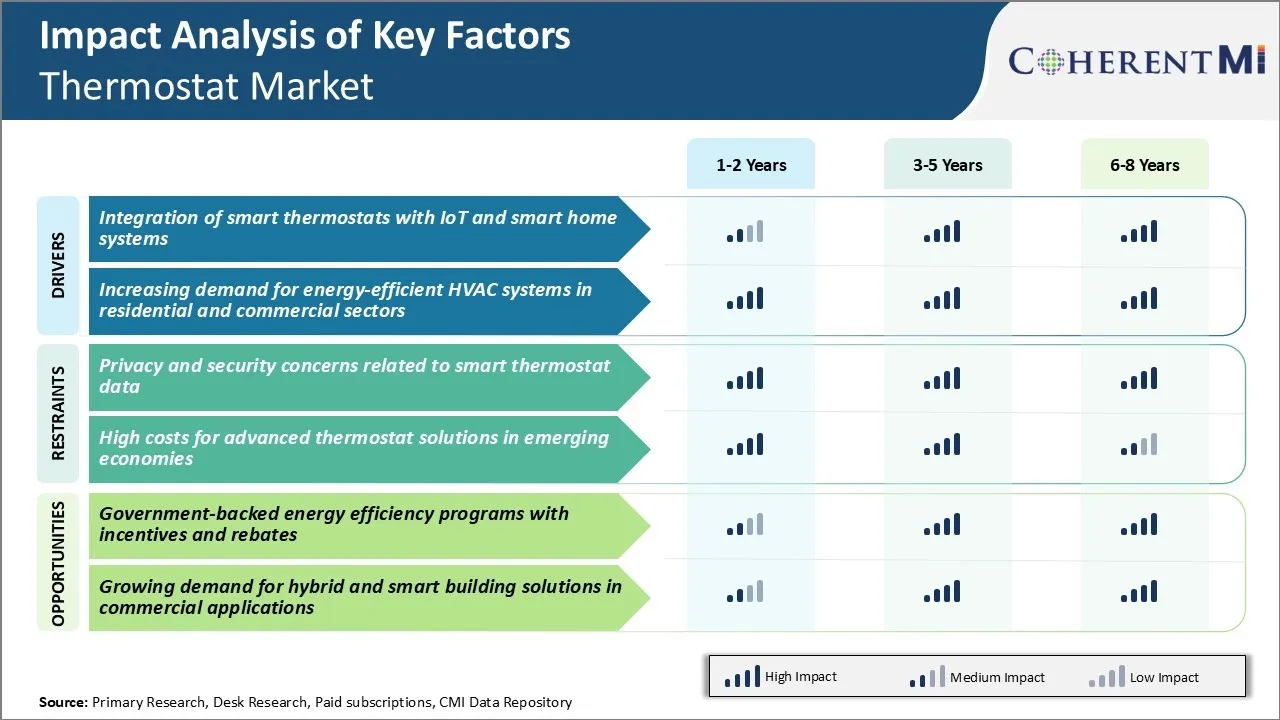Thermostat Market Trends
Market Driver - Integration of Smart Thermostats with IoT and Smart Home Systems
One of the major drivers that is expected to fuel the growth of the thermostat market is the increasing integration of smart thermostats with Internet of Things (IoT) and smart home systems. In recent years, there has been a rise in the adoption of connected devices and smart home technologies among consumers.
Smart thermostats offer an easy way to control and manage home heating and cooling systems remotely using smartphones and devices. Leading thermostat manufacturers are focusing on enhancing the connectivity and compatibility of their products with various virtual assistants, smart speakers, security cameras and other smart appliances.
Furthermore, integration with smart home platforms also enables users to monitor and manage their home's energy usage from anywhere. The growing popularity of smart home devices and emphasis on convenience is a key factor spurring thermostat market players to integrate their offerings with the expanding IoT ecosystem.
This ensures that modern households can leverage smart thermostats to their fullest potential for achieving enhanced control, comfort, and efficiency.
Market Driver - Increasing Demand for Energy-efficient HVAC Systems in Residential and Commercial Sectors
Another major driver for the growth of the thermostat market is the rising demand for energy-efficient heating, ventilation, and air conditioning (HVAC) systems across the residential and commercial sectors. End-users are increasingly seeking ways to reduce their operating expenses and carbon footprint associated with HVAC equipment. Programmable thermostats also allow setting separate weekday and weekend schedules according to different usage routines.
Commercial building owners are also under pressure to enhance the energy-efficiency of HVAC systems to lower costs. Smart thermostats integrated with sensors and controls provide centralized monitoring and management of multiple zones with varying occupancy and heating/cooling needs. The demand for smart, connected thermostats supporting efficient HVAC operations is expected to rise substantially in the coming years.
Both individual consumers and commercial establishments recognize their role in conserving natural resources and minimizing environmental impacts. The energy-saving ability of smart thermostats addresses this need perfectly, making it a driving factor behind thermostat market growth.

Market Challenge - Privacy and Security Concerns Related to Smart Thermostat Data
One of the major challenges faced by the smart thermostat market is privacy and security concerns related to the data collected by these connected devices. Smart thermostats can access data about users' home environment and activities which raises privacy issues.
There are ongoing debates around how device manufacturers and energy service providers can access and use personal information collected via smart home technologies. Some users fear that the detailed energy usage and occupancy data collected could be hacked or misused. Regulatory authorities have also raised concerns about data privacy and strengthened laws around how customer data should be protected.
Dealing with these privacy issues is important for gaining widespread consumer acceptance and boosting adoption rates of smart thermostats. Manufacturers in the thermostat market need to focus on enhancing cybersecurity of the devices and networks as well as establish transparent data privacy policies to win user trust.
Market Opportunity - Government-backed Energy Efficiency Programs with Incentives and Rebates
One significant opportunity for the smart thermostat market is the various government-backed energy efficiency programs that incentivize the adoption of smart energy solutions through incentives and rebates. Many countries and states offer subsidies, tax credits as well as bill discounts or rebates for consumers who install smart thermostats and other home energy management technologies.
For instance, utilities in the US provide rebates of up to $100 for smart thermostats under their energy efficiency programs. Similarly, the UK government offers grants up to £75 for smart thermostats that qualify under the Energy Company Obligation scheme. Such financial incentives help boost demand by lowering the upfront costs for consumers.
They also encourage energy savings and conservation goals set by governments. Smart thermostat manufacturers can leverage these programs to raise awareness, education and sales of their products.